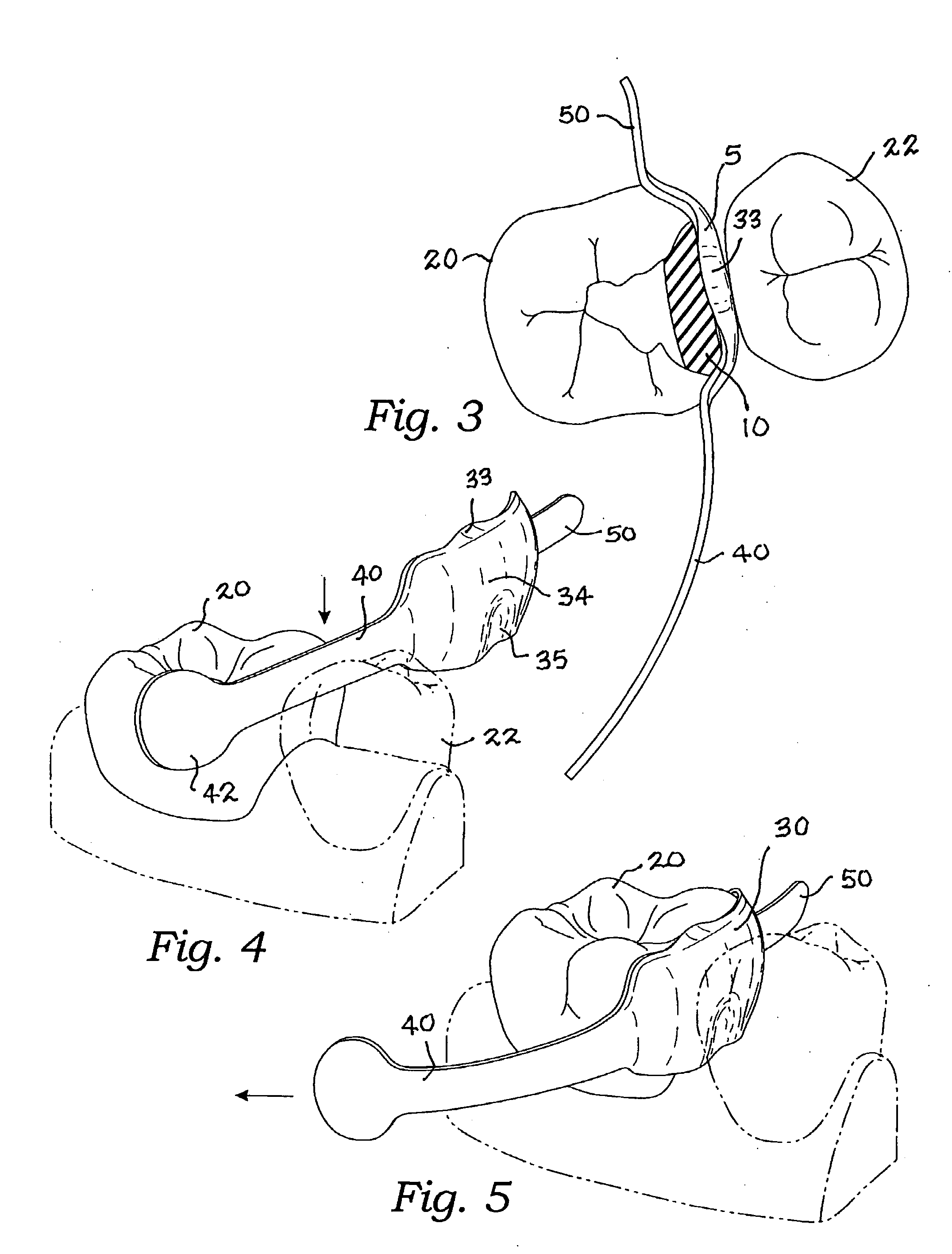Dental matrix for a class II, III or IV restoration
a technology of dental matrix and iii, applied in the field of dental matrix, can solve the problem that the use of memory metal technology cannot be taught to provide a complex matrix shape that can be forced grossly out of shape, and achieve the effect of relative ease of positioning
- Summary
- Abstract
- Description
- Claims
- Application Information
AI Technical Summary
Benefits of technology
Problems solved by technology
Method used
Image
Examples
Embodiment Construction
[0032] The above described drawing figures illustrate the invention in at least one of its preferred embodiments, which is further defined in detail in the following description. Those having ordinary skill in the art may be able to make alterations and modifications in the present invention without departing from its spirit and scope. Therefore, it must be understood that the illustrated embodiments have been set forth only for the purposes of example and that they should not be taken as limiting the invention as defined in the following.
[0033] As shown in FIGS. 1A and 1B the most common prior art matrix 3 used for a class II, III or IV restoration is of convex metal or plastic requiring vertical insertion and a wide aperture 21, i.e., excessive removal of tooth structure at the lingual and buccal embrasures and the gingival margin in order to allow the matrix to be inserted without distortion. This, of course, results in excessive patient inconvenience and excessive drilling and ...
PUM
 Login to View More
Login to View More Abstract
Description
Claims
Application Information
 Login to View More
Login to View More - R&D
- Intellectual Property
- Life Sciences
- Materials
- Tech Scout
- Unparalleled Data Quality
- Higher Quality Content
- 60% Fewer Hallucinations
Browse by: Latest US Patents, China's latest patents, Technical Efficacy Thesaurus, Application Domain, Technology Topic, Popular Technical Reports.
© 2025 PatSnap. All rights reserved.Legal|Privacy policy|Modern Slavery Act Transparency Statement|Sitemap|About US| Contact US: help@patsnap.com



